Fulfilling our mission to protect and restore the Morro Bay estuary for people and animals requires a lot of hard work in the field. Read on to see what our staff and volunteers have been up to during the month of December.
Eelgrass Monitoring
In 2005, with help from the Battelle Marine Sciences staff, we established four permanent transects for annual eelgrass monitoring in Morro Bay. These transects were chosen to represent different zones of the bay and capture differences between these zones. We added an additional transect in 2012. In December, we monitored two of these transects along with our other surveys.
The bed at State Park Marina is mostly a subtidal bed, so it is typically submerged in the water. We caught it at a very low tide (-1.5ft) in December and were able to get a better look. We used our smaller quadrat (0.5m x 0.5m), put on our wetsuits, and prepared to get muddy.
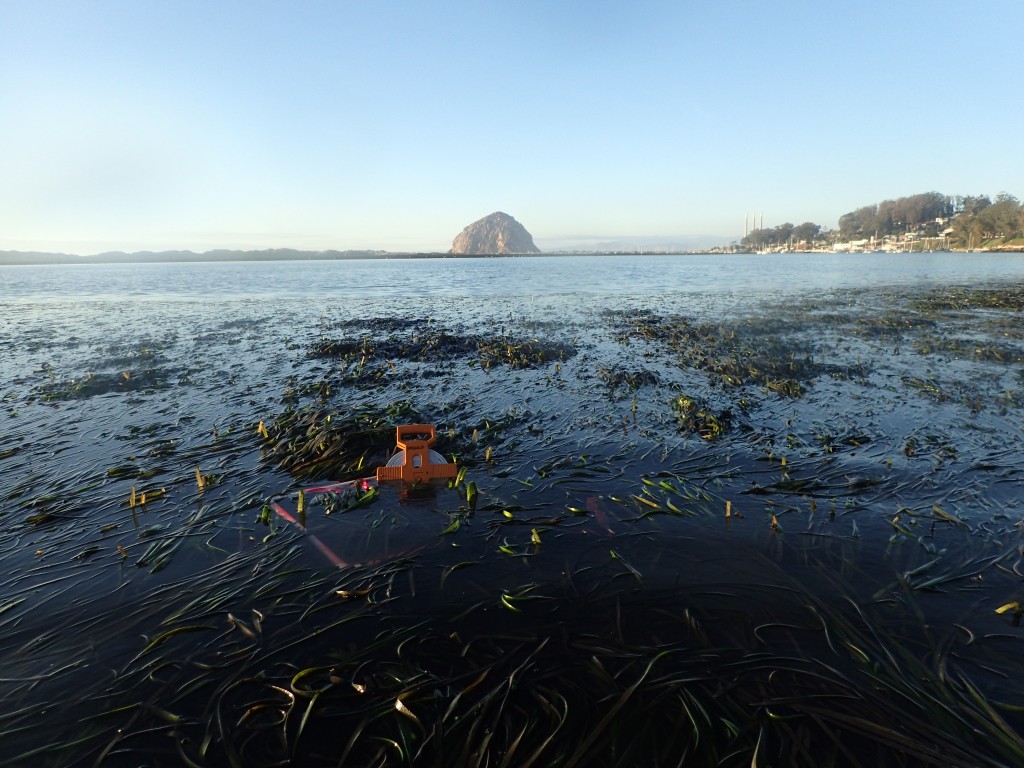
While surveying State Park Marina, we spotted this horn shark hiding in the eelgrass bed. Interested in learning more about horn sharks? Check out this Science Friday article about horn shark egg cases.
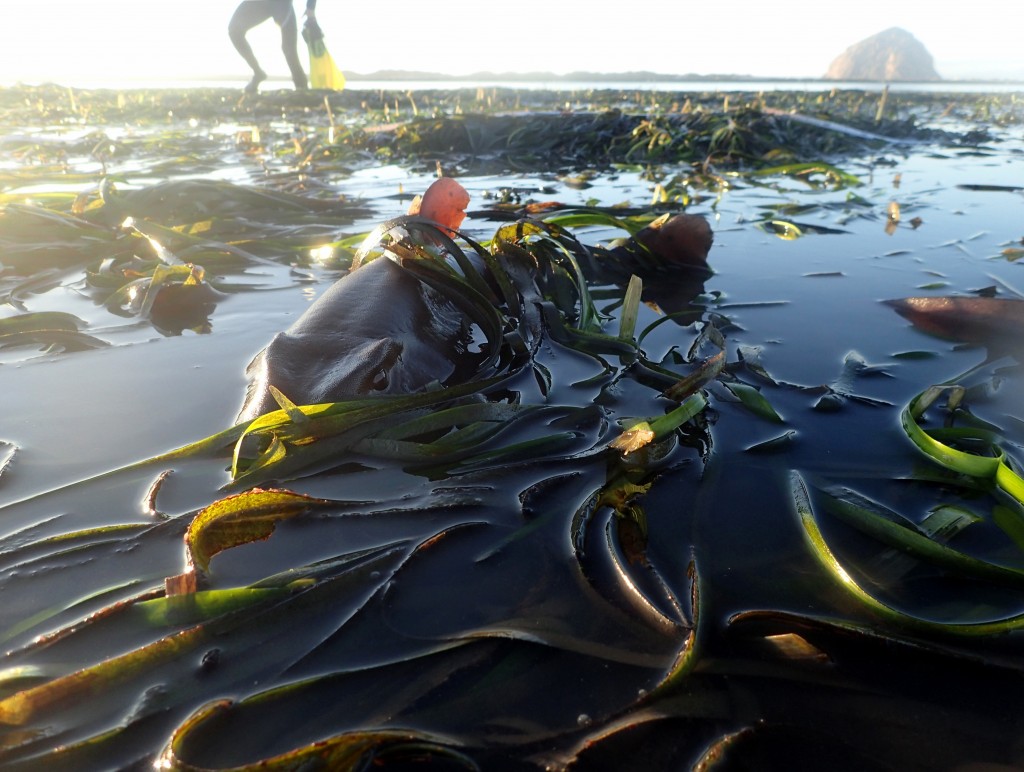
While conducting a survey on our permanent transect at Coleman Beach, we spotted this octopus in the eelgrass. Juvenile octopi like to use eelgrass and kelp beds as their home before migrating farther out on the sandy sea floor. Researchers exploring the Monterey Canyon with a remote operated vehicle (ROV) found red octopus at depths of 600ft! They are common in the intertidal zone, but be careful not to touch them—they can bite!
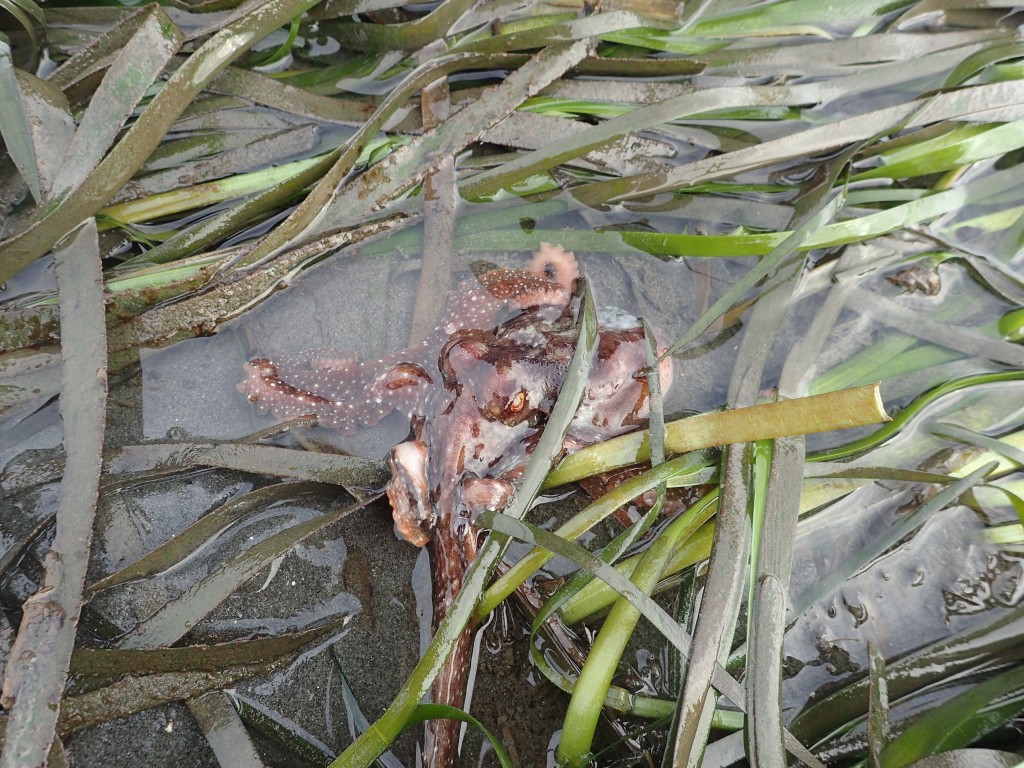
Though you can see and monitor eelgrass at high tides, sometimes the data we need to collect requires a low tide, or makes it a lot easier to spot small patches of eelgrass. In the winter, we get our low tides in the afternoons, which means we often get to see amazing sunsets.
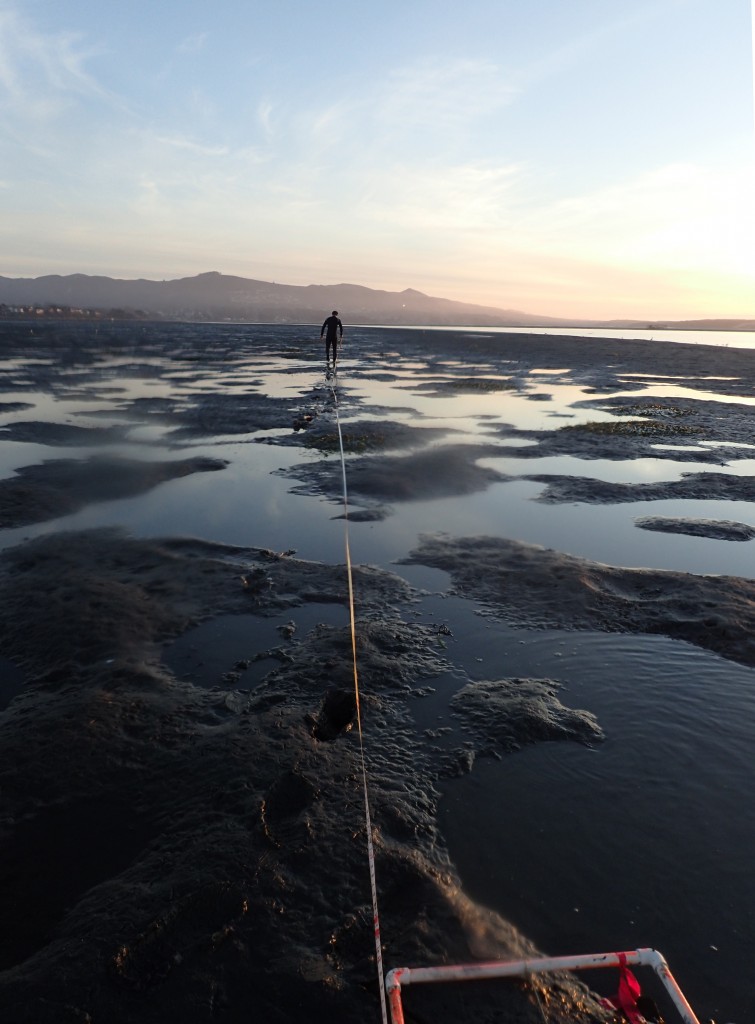
Creek Monitoring
2016 culminated with 3.97 inches of rain for our watershed in December. The rain that came the third week of December was enough to get many of our previously dry creek sites flowing (and to help set us up for an exciting January!)
Staff raced out to monitor sites and see them after the rain.
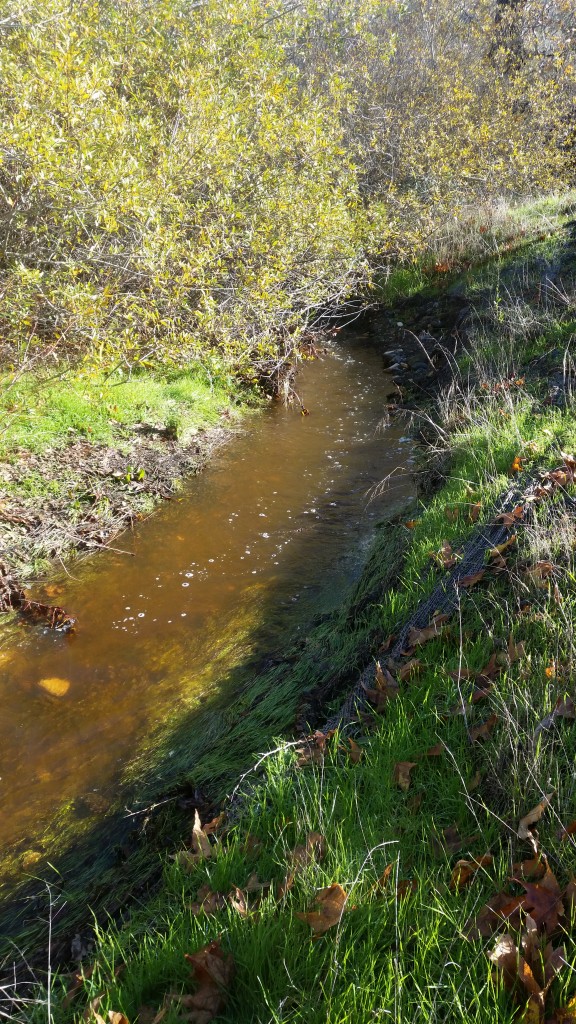
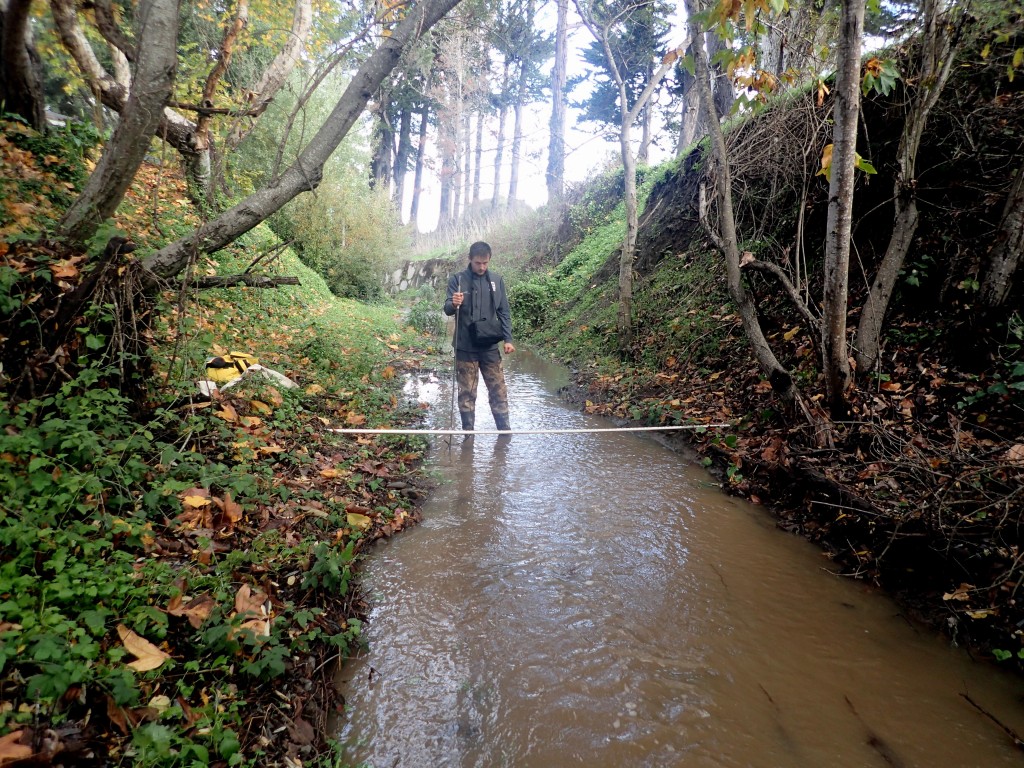
Watershed Stewards Program members
Evan headed out in the field with our AmeriCorps Watershed Stewards Program (WSP) members again to collect water quality and flow data. Khaalid and Lauren will work with us and our partners (California Conservation Corps, Central Coast Salmon Enhancement and the City of San Luis Obispo) until their term ends in August, 2017. Throughout their term, these two will participate in a variety of activities including monitoring and restoration work to benefit salmonids (in San Luis Obispo County, this means steelhead trout).
On top of that, WSP members also go into local classrooms to educate students on steelhead trout and water conservation. These two will also create and implement a watershed restoration project with volunteers from our community.
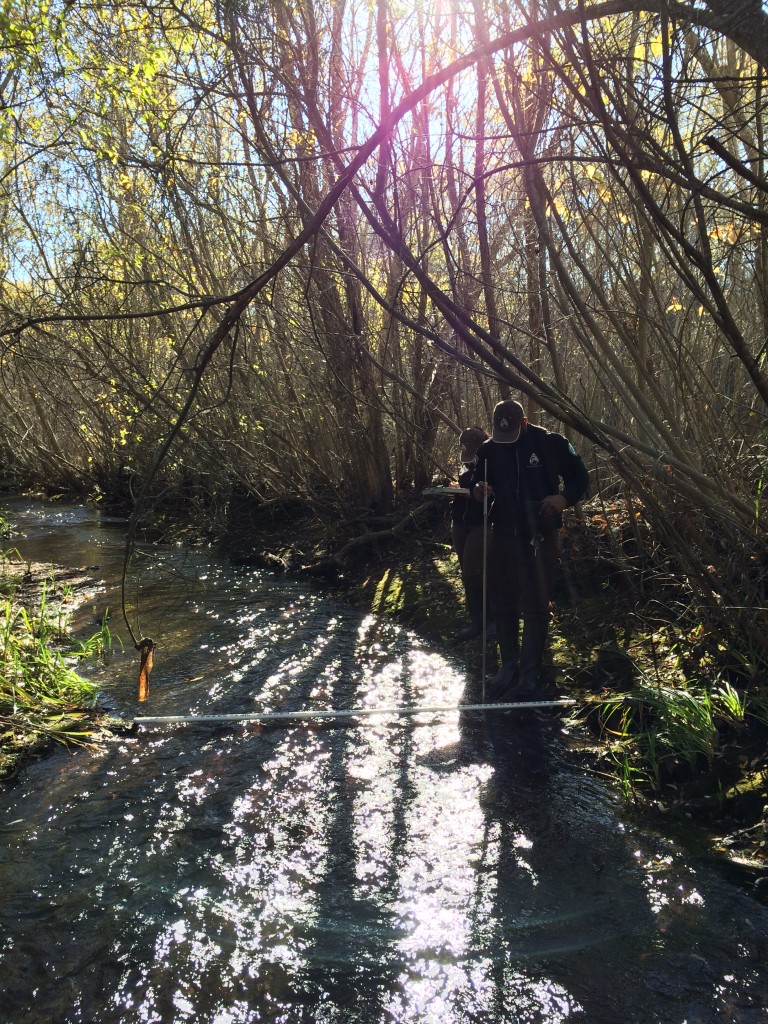
Watch our video to learn about more steelhead trout and to learn what you can do to help conserve water and ensure this species remains safe in Morro Bay.